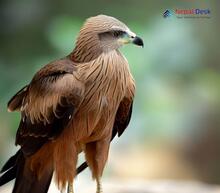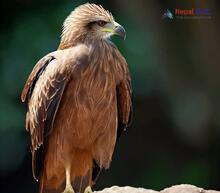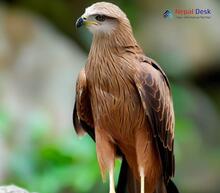Nepal, a country known for its diverse landscapes and rich biodiversity, is home to a myriad of fascinating bird species. One such group of raptors that can be found soaring through the pristine Himalayan skies belongs to the genus Milvus. Here, we will explore the fascinating world of these magnificent birds, focusing on their characteristics, habitat, and behavior.
The Milvus Genus: A Brief Introduction
The Milvus genus comprises medium-sized birds of prey, commonly referred to as kites due to their graceful gliding and soaring abilities. These raptors possess sharp beaks and talons, aiding them not only in hunting small mammals, birds, and reptiles but also in scavenging upon carrion when necessary. Their distinctive forked tails offer excellent maneuverability during flight and are a key identification feature.
The Kites of Nepal: Species Overview
Two species belonging to the Milvus genus can be found in Nepal – the Black Kite (Milvus migrans) and the Red Kite (Milvus milvus). Let's delve deeper into brief profiles of both species:
Black Kite (Milvus migrans)
Commonly seen across a variety of habitats in Nepal – from urban areas to riverbanks and forests – the Black Kite is aptly named for its dark brown plumage that appears almost black when flying overhead. This versatile bird can be observed virtually all year round. The Black Kite has an extensive geographical range; its subspecies can be found across Europe, Asia, Africa, and Australia.
Red Kite (Milvus milvus)
This elegant raptor is characterized by its stunning reddish-brown plumage and striking contrasting white patches under its wings while in flight. The Red Kite is an uncommon winter visitor to Nepal, prevalent between October and March. Its primary distribution encompasses Europe, with small populations scattered in North Africa and the Middle East.
Observing Milvus in Their Natural Habitat
For bird enthusiasts planning a nature trip to Nepal, various national parks and conservation areas offer opportune locations for sighting these charismatic birds in their natural habitats. Among such protected areas are Chitwan National Park, Bardia National Park, and Annapurna Conservation Area. The kites' aerial acrobatics as they swoop down to capture prey or engage in mid-air skirmishes over territory is truly a sight to behold.
In conclusion, the Milvus genus found in Nepal showcases not only the country's incredible biodiversity but also demonstrates the beauty and grace of these incredible birds of prey. By learning more about the Black Kite and Red Kites inhabiting Nepal's skies, we can better understand the importance of protecting their habitats and maintaining a balanced ecosystem. Do not miss out on an opportunity to observe these magnificent creatures on your next visit to the awe-inspiring landscapes of Nepal.




